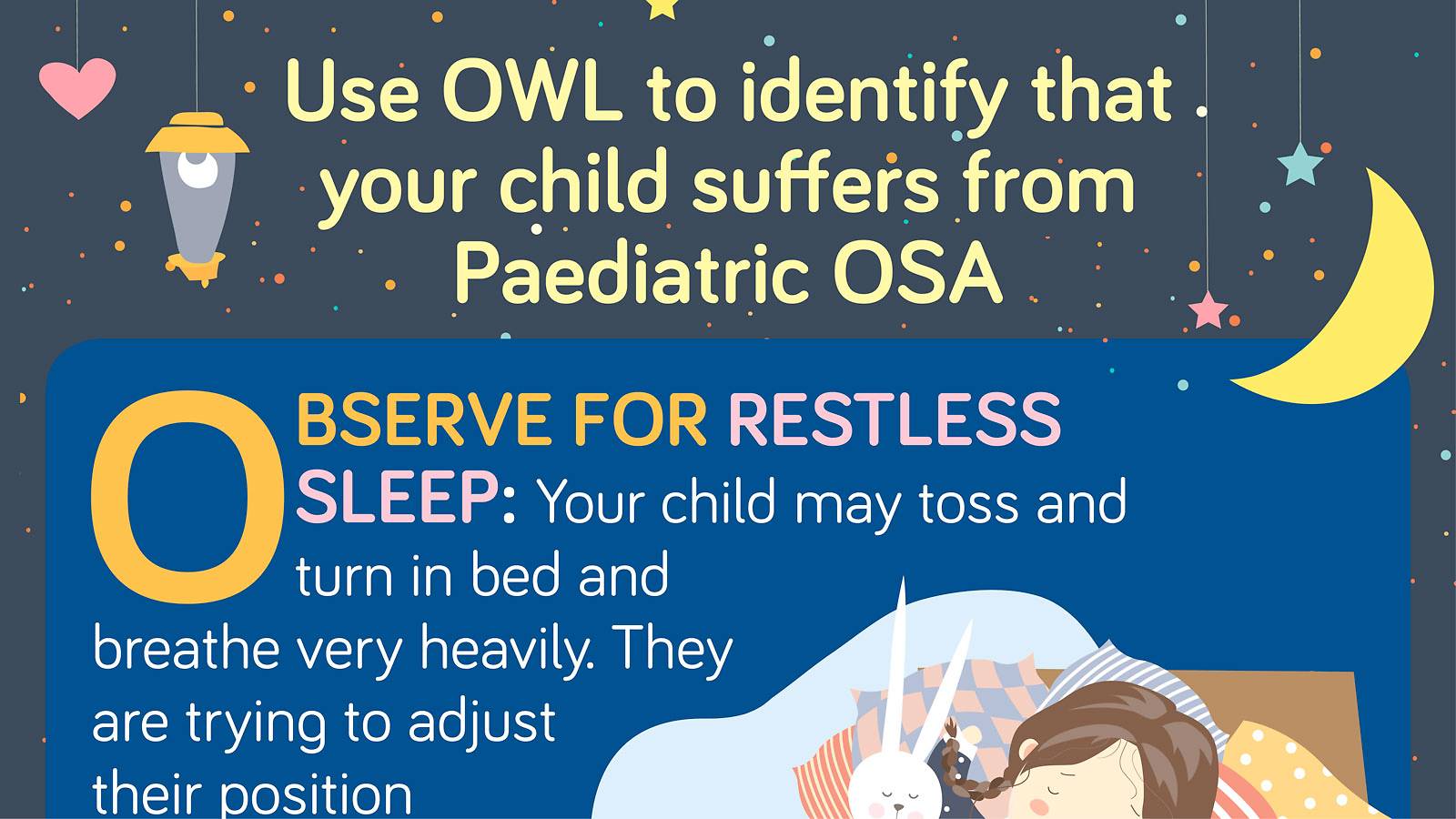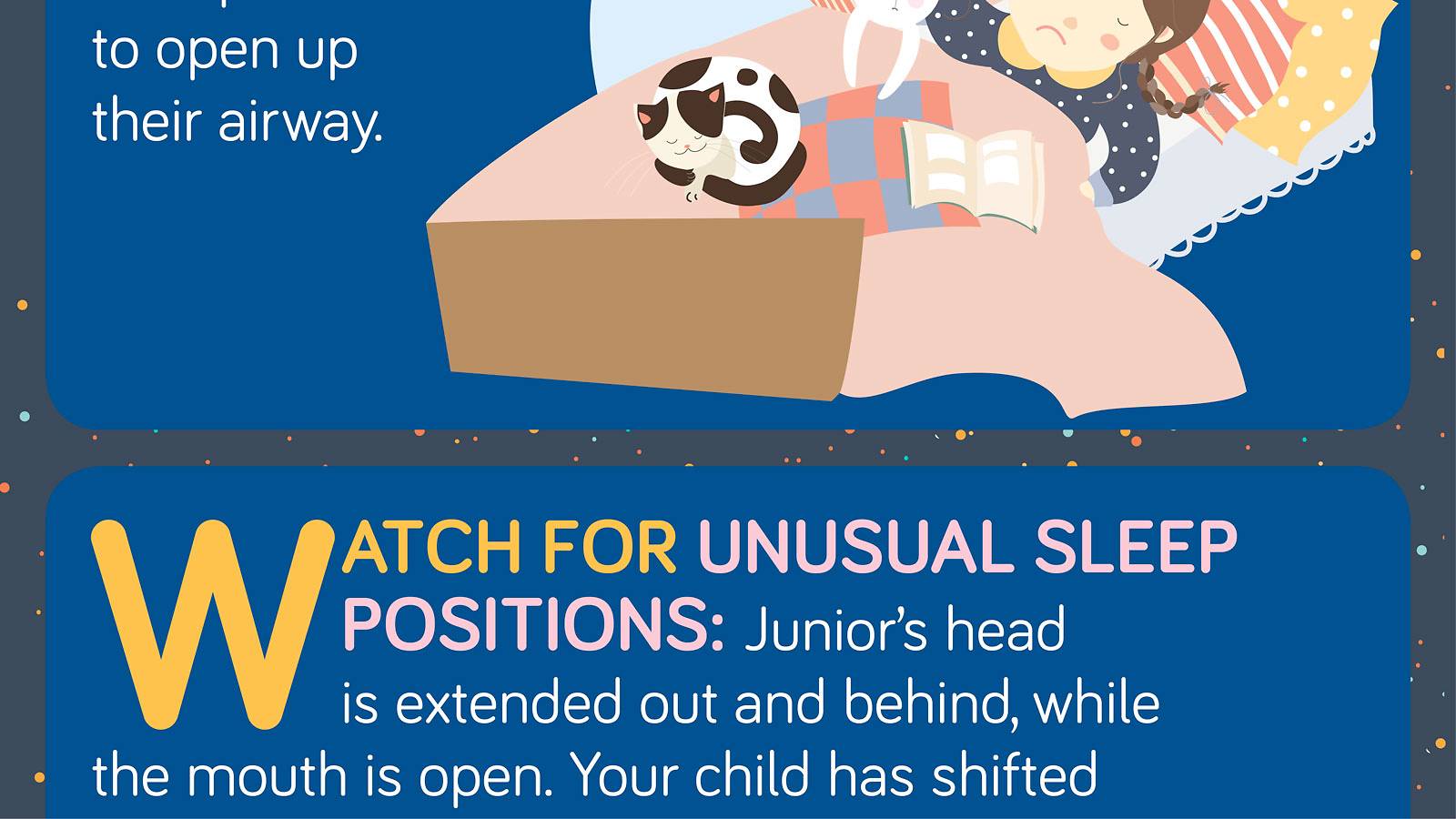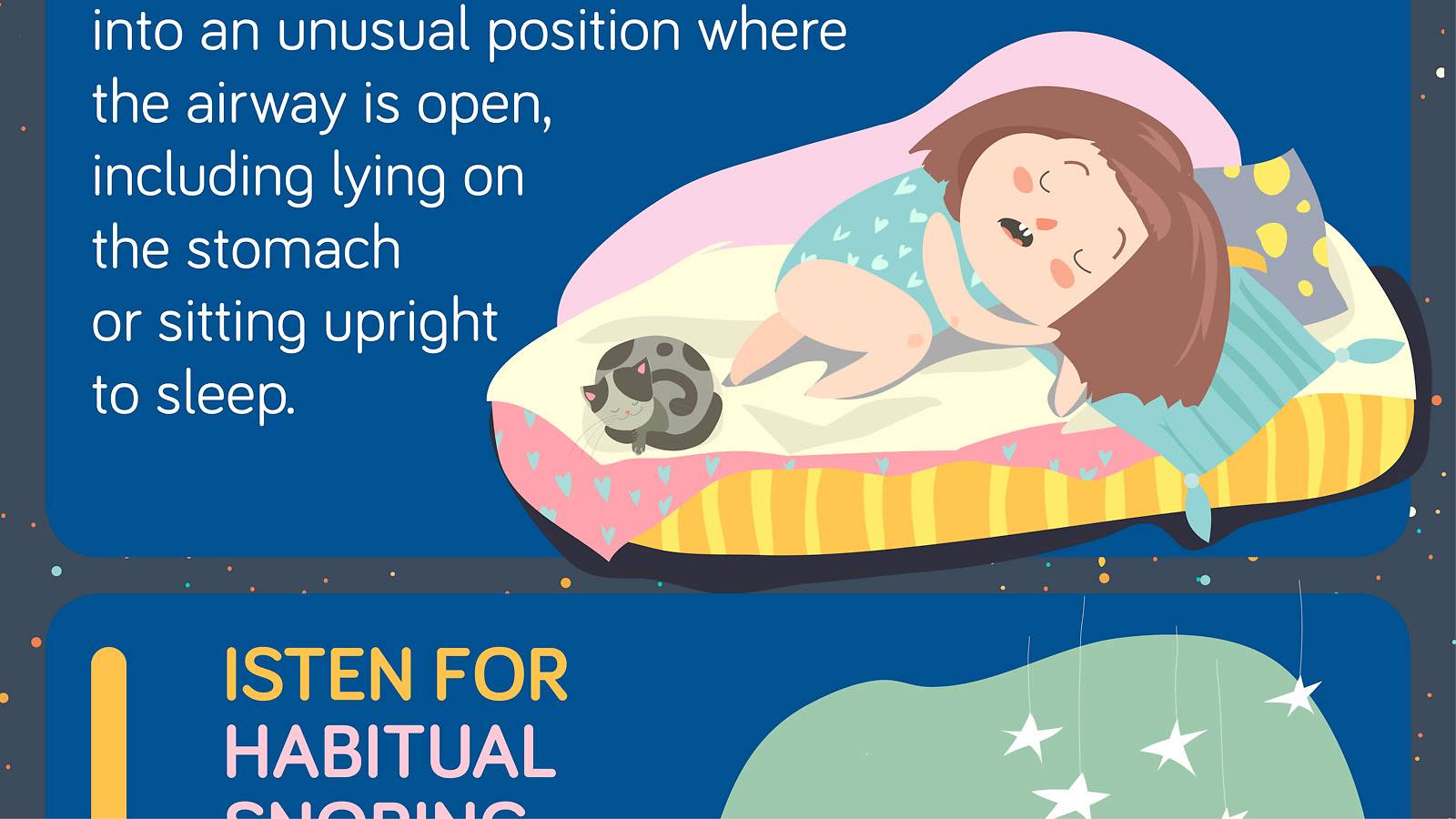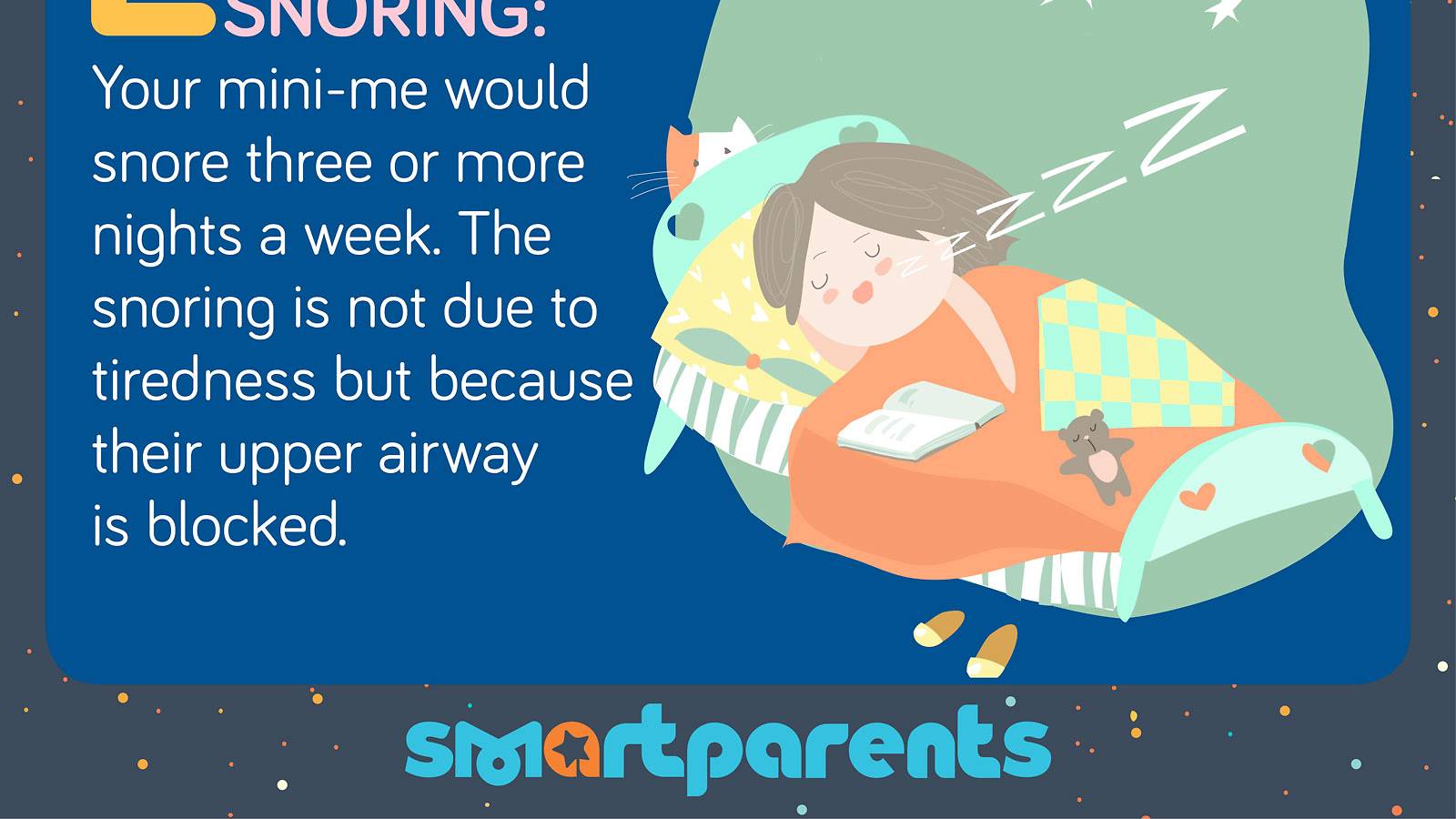Snoring points to a sleep disorder in your child, which is serious. But thankfully, looking out for it is simple.

At night, we make sure that our children get to bed early, so that they’ll get a good night’s sleep for the next day. However, it’s not just about the number of hours they clock in bed. We have to remember that good sleep stems from uninterrupted rest.
Quality sleep is what we should keep in mind when we talk about children’s sleep health.
You can ensure better quality sleep for your child when you look out for Paediatric Obstructive Sleep Apnea (OSA).
What is Paediatric Obstructive Sleep Apnoea (OSA)?
Paediatric OSA is a sleep disorder that occurs when a sleeping child’s upper airway is obstructed. This results in a reduced intake of air and oxygen, which is essential for the regeneration and development of a child’s body during sleep.
Awareness about this disorder is low, so medical professionals often misdiagnose it, while parents tend to overlook the condition.
Why we should look out for Paediatric OSA
As Paediatric OSA reduces the quality of children’s sleep, such sleep deprivation can affect these children, such as irritability in the morning, hyperactivity, and may also impair cognitive and physical development. It may even give rise to cardiovascular problems in the future.
More than 10,000 young children in Singapore suffer from this sleep disorder but many parents with young children are unaware of it. In fact, nine out of 10 Singaporean parents could not accurately identify the symptoms of Paediatric OSA.
Infographic: Rachel Lim



How to identify Paediatric OSA?
Follow these three simple OWL steps to find out if your kid is suffering from Paediatric OSA:
1) O: Observe for Restless Sleep
A child who suffer from an obstructed airway would instinctively adjust his or her sleeping position in an attempt to free the airway. This results in frequent movements during sleep to find a suitable position. Signs of this may include pillows and blankets that have fallen to the floor and rumpled bed sheets.
2) W: Watch out for Unusual Sleep Positions
After struggling to find a suitable position to free the airway, a child suffering from Paediatric OSA might settle in an unusual sleep position. This often constitutes the hyperextending of the neck back and outwards, a position that can free up the airway. Examples of such sleep positions include hanging one's head off the bed, sitting up in bed to sleep, and the use of pillows to prop the head back.
3) L: Listen for Habitual Snoring
Contrary to what many believe, habitual snoring is not just the result of exhaustion, but is in fact an indicator of an obstructed airway. A child suffering from Paediatric OSA may even snore three or more nights a week!
Apply the simple 3-step OWL method every night to make sure that your child gets quality sleep! You would need to use OWL for several weeks to determine that your child displays these symptoms regularly while sleeping.
While restless sleep, unusual sleep postures and habitual snoring may indicate other issues with your child's sleep, these three symptoms combined might point to Paediatric OSA. So, do speak to your child’s doctor about it.
Contrary to what many believe, habitual snoring is not just the result of exhaustion, but is in fact an indicator of an obstructed airway.
What should I do if I suspect my child has Paediatric OSA?
If you suspect that your child might have Paediatric OSA after conducting the OWL test, speak to your child’s doctor and request a referral to a paediatric sleep specialist.
How is Paediatric OSA diagnosed?
The gold standard for diagnosing Paediatric OSA is the polysomnography, otherwise known as a sleep study, which requires an overnight stay the hospital for your child.
During the survey, several sensors would be attached to the patient to monitor their breathing and sleep behaviour. The sensors are non-invasive, though the patient might experience a slight level of discomfort. A camera would also be used to record the activity during your offspring’s sleep. Throughout the night, a sleep technician would be monitoring your little one. Once the test ends in the morning, junior can take a bath and have breakfast before heading home.
After the sleep study, the sleep specialist would be able to access the severity of Paediatric OSA in your child, as well as what causes it.
How is Paediatric OSA treated?
As there are multiple factors that can cause Paediatric OSA, treatment for the obstruction of the upper airway can vary. They can range from treating a child’s allergy and weight loss, to the surgical removal of tonsils and adenoids. A Continuous Positive Airway Pressure (CPAP) machine may also be used to ensure that your kid’s upper airway remains unobstructed.
Guardians of the Night is a student-led public health communication campaign to raise awareness for Paediatric Obstructive Sleep Apnea. Parents are taught to use the OWL checklist to identify key signs of the disorder.
For paediatric healthcare for your child, consider consulting the paediatricians at Thomson Paediatric Centre. Clinics are conveniently located islandwide, find out more now.
Photos: iStock
Like us on Facebook and check SmartParents regularly for the latest reads!
You may also like…
6 ways in which you are turning your child into a brat
